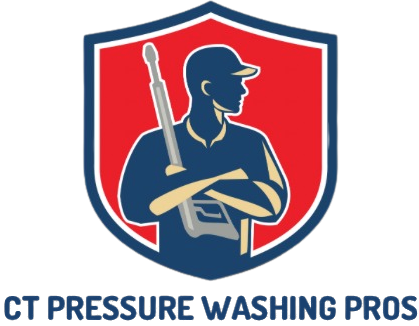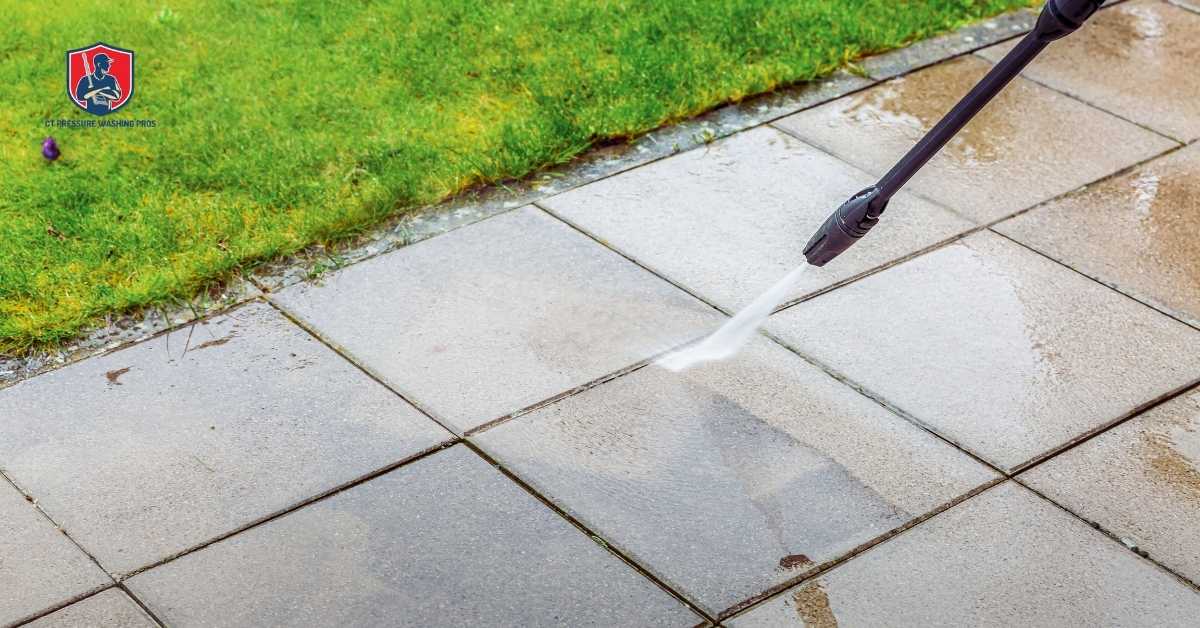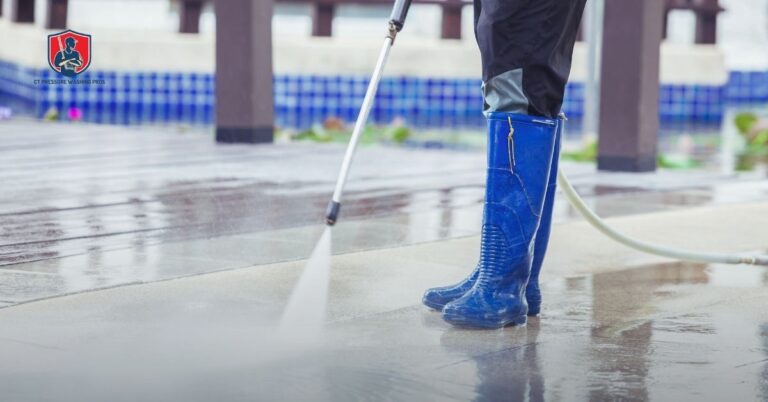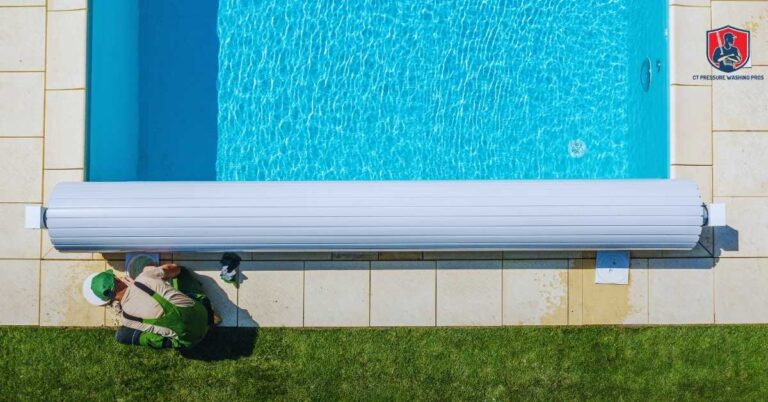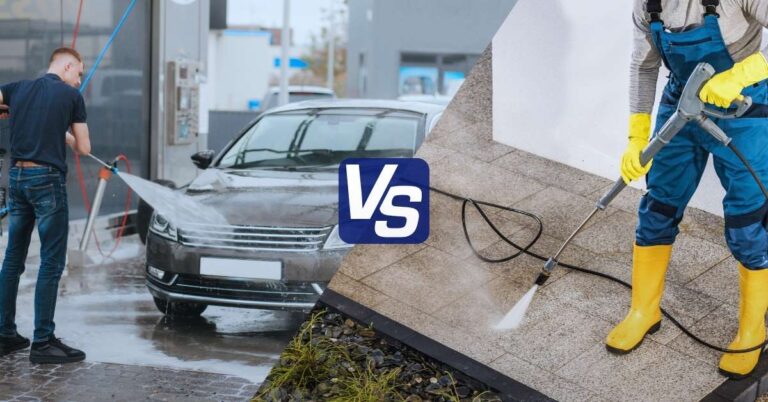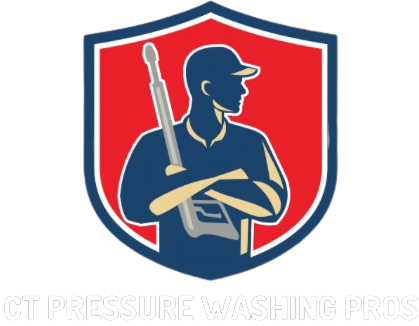Eco-friendly pressure washing is quickly becoming the smarter way to clean homes—protecting your property, plants, and the planet at the same time. Traditional cleaners packed with harsh chemicals can make surfaces look good in the short term, but leave behind long-term damage to siding, sealants, and even your soil. The runoff often flows into drains and waterways, carrying toxins that harm the environment and local wildlife.
Homeowners are realizing they don’t have to sacrifice performance to stay safe and sustainable. With today’s biodegradable, plant-based, and non-toxic cleaning solutions, you can remove dirt, mold, and stains just as effectively—without risking harm to your property or landscape. These products break down naturally, leaving behind a clean surface and a smaller environmental footprint.
This guide walks you through everything you need to know about eco-friendly pressure washing—from the safest cleaning ingredients and product recommendations to proper application and runoff control. By the end, you’ll see how easy it is to clean responsibly and keep your home looking fresh year-round.
Table of Contents
Why Choose Eco-Friendly Pressure Washing?
Choosing eco-friendly pressure washing isn’t just about keeping up with trends—it’s about protecting your home, your health, and the environment around you. Harsh chemical cleaners can strip paint, corrode metal, and weaken sealants over time. They often leave residues that kill grass, burn plants, and contaminate nearby soil. The runoff from these cleaners usually ends up in storm drains, carrying toxins that pollute local streams and harm aquatic life.
Eco-friendly cleaning solutions take a different approach. They rely on biodegradable and non-toxic ingredients that clean effectively and break down safely after use. These products dissolve dirt, mold, and mildew without leaving harmful residues behind. They’re also gentle on paint, siding, and decks, helping you maintain your property longer without costly repairs.
There’s also a health benefit. Families with kids or pets can pressure wash without worrying about chemical exposure or lingering fumes. Eco solutions reduce skin and respiratory irritation, making outdoor cleaning safer and more comfortable.
On top of that, they’re cost-effective. While some eco detergents might seem more expensive upfront, they often last longer and require less scrubbing, saving water, time, and effort. When used correctly, they clean just as powerfully as traditional chemicals—proving that going green doesn’t mean compromising on results.
Eco-friendly pressure washing is a practical choice that protects your home’s surfaces, saves money, and keeps your surroundings healthy. Next, let’s look at the natural ingredients that make these cleaners safe and effective.
Key Ingredients in Eco-Friendly Pressure Washing Solutions
Eco-friendly pressure washing solutions work because of simple, natural ingredients that clean effectively without harming your property or the environment. Each ingredient plays a specific role—lifting dirt, cutting grease, or removing mold—while staying safe for plants, pets, and waterways.
1. Biodegradable Surfactants
Surfactants help loosen dirt and grime so water can rinse it away easily. In eco cleaners, they’re made from plant-based sources like coconut or corn instead of petroleum. These natural surfactants break down quickly after use, reducing pollution and runoff risks. They’re gentle enough for siding, decks, and driveways yet strong enough to handle mold and oil stains when paired with proper pressure.
2. Vinegar and Baking Soda
This household duo offers a safe and affordable cleaning option. Vinegar’s acidity helps dissolve mineral deposits and mildew, while baking soda provides mild abrasion for tougher buildup. Mixing one part vinegar with one part warm water creates a general cleaner for walls and patios. For stubborn spots, sprinkle baking soda first, then spray vinegar for an instant fizz that lifts stains naturally.
3. Oxygen Bleach (Sodium Percarbonate)
Oxygen bleach is a safer alternative to chlorine bleach. It cleans deeply without releasing toxic fumes or harming vegetation. When mixed with water, it releases oxygen that breaks down organic matter like algae and mold. It’s ideal for wood decks, shingles, and concrete surfaces where chlorine would cause discoloration or damage.
4. Citrus Extracts and Essential Oils
Citrus-based cleaners use natural acids and oils from lemons or oranges to cut through grease and grime. They smell fresh, leave no residue, and are safe for plants. They’re especially good for cleaning outdoor furniture, fences, and patios where chemical cleaners might linger.
5. Enzyme Cleaners
Enzymes target specific stains—like oil, mildew, or organic buildup—by breaking them down into natural components. These cleaners are effective for concrete, brick, and stone surfaces. They keep working after rinsing, continuing to digest residue without leaving harmful chemicals behind.
Each of these ingredients offers an eco-conscious way to clean effectively. In the next section, we’ll explore some top-rated eco-friendly pressure washing products that combine these ingredients into ready-to-use solutions.
Top Eco-Friendly Pressure Washing Products You Can Buy
Eco-friendly cleaning has grown beyond DIY mixes—many commercial products now offer powerful, plant-based cleaning without toxic chemicals. These options save time, ensure consistent results, and are safe for most home surfaces. Here are a few trusted choices that balance effectiveness with environmental safety.
1. Simple Green Oxy Solve
Simple Green Oxy Solve is one of the most widely used biodegradable cleaners for siding, decks, and driveways. It uses peroxide-based chemistry to lift dirt, mold, and stains without leaving harmful residue. The formula is non-toxic, phosphate-free, and safe for lawns and plants when diluted correctly. It works well with pressure washers and hand sprayers, making it ideal for both small and large projects.
2. Krud Kutter House & Siding Cleaner
Krud Kutter offers an EPA Safer Choice–certified solution made from plant-based ingredients. It removes mildew, grime, and oxidation from surfaces like vinyl, brick, stucco, and painted wood. Unlike conventional detergents, it won’t damage finishes or discolor surfaces. It’s a solid pick for homeowners who want a ready-to-use cleaner that works fast and rinses clean.
3. Wash Safe Industries Spray & Clean
This hydrogen peroxide–based cleaner is safe for roofs, shingles, and fences. It breaks down into oxygen and water after use, leaving no chemical runoff. It’s especially effective on black streaks caused by algae and can be applied with minimal pressure to prevent surface wear. Spray & Clean is also biodegradable and non-corrosive, making it a good long-term option for outdoor maintenance.
4. EcoGen Pressure Washer Cleaner
EcoGen offers a concentrated, biodegradable detergent suitable for residential and commercial use. It’s free from harsh acids and phosphates, cutting through grease, oil, and organic buildup efficiently. A small amount goes a long way, making it cost-effective while maintaining strong cleaning power.
5. DIY Eco-Friendly Cleaners
For those who prefer homemade solutions, a simple mix of water, vinegar, and baking soda works well for light cleaning. Adding a few drops of citrus essential oil helps dissolve grease and leaves a clean scent. These formulas are safe, affordable, and easy to prepare, though they may need more scrubbing for heavy buildup.
Each of these products offers safe, effective cleaning without harming your property or the environment.
How to Use Eco-Friendly Pressure Washing Solutions Properly
Using eco-friendly pressure washing products correctly ensures you get the best results without wasting water or harming your property. The right process makes cleaning more effective, prevents surface damage, and keeps your runoff safe for the environment.
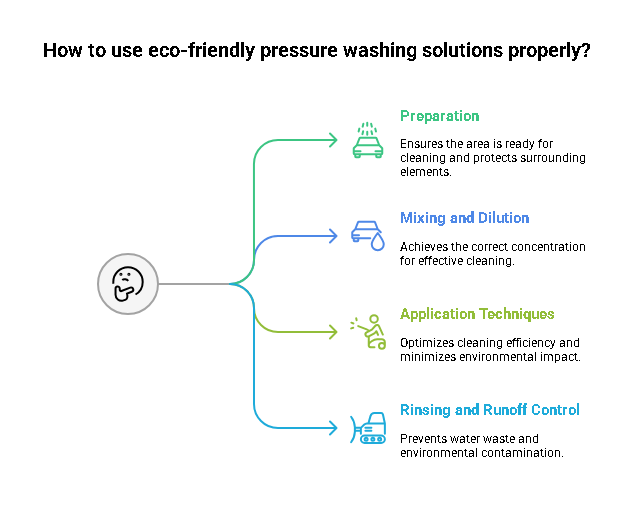
1. Preparation
Start by inspecting the area you plan to clean. Move outdoor furniture, vehicles, and fragile items out of the way. Cover plants, electrical outlets, and light fixtures with plastic sheeting or waterproof covers. Sweep away leaves, dirt, and debris before you begin—this helps the cleaning solution work more efficiently.
2. Mixing and Dilution Tips
Follow the manufacturer’s dilution instructions carefully. Eco-friendly cleaners are concentrated, so using more than needed won’t improve results and can waste product. For DIY mixes, a 1:10 ratio of cleaner to water works well for most surfaces. Always test a small area first to make sure it doesn’t affect paint, wood, or sealants.
3. Application Techniques
Apply the solution evenly using a low-pressure sprayer or the soap setting on your pressure washer. Allow it to sit for several minutes to loosen grime, but never let it dry on the surface. For tougher buildup, lightly scrub with a soft brush before rinsing. Use the appropriate pressure for each surface—lower for siding and wood, higher for concrete and brick—to avoid stripping or etching.
4. Rinsing and Runoff Control
After cleaning, rinse thoroughly with fresh water. Always direct runoff toward grass, gravel, or soil instead of storm drains. These natural areas help filter out dirt and contaminants safely. If possible, use collection mats or barriers to catch water, especially near driveways and sidewalks. This simple step keeps pollutants from entering local waterways.
Applying eco-friendly pressure washing solutions the right way protects both your home and the environment.
Surfaces That Benefit Most from Eco-Friendly Cleaning
Eco-friendly pressure washing works well on almost every part of your home’s exterior. The key is using the right cleaner and pressure setting for each surface to get a deep clean without causing damage.
1. House Siding
Vinyl, wood, and fiber cement siding collect dirt, mold, and mildew over time. Plant-based or oxygen-based cleaners remove buildup effectively while protecting paint and coatings. Use a low-pressure setting and wide spray pattern to prevent water from seeping behind panels or damaging finishes.
2. Roofs and Gutters
Roofs should always be cleaned with a soft washing method. Oxygen bleach or peroxide-based cleaners remove algae and stains without harming shingles or metal roofing. These products also prevent black streaks caused by bacteria. Clean gutters at the same time to allow proper drainage and avoid water backup.
3. Driveways and Patios
Concrete and stone surfaces handle more pressure, so you can use a higher PSI for cleaning. Citrus or enzyme-based cleaners work best for oil spots, rust stains, and organic buildup. Rinsing thoroughly prevents residues that can make surfaces slippery or attract more dirt.
4. Decks and Fences
Wood surfaces need gentle cleaning to avoid splintering or fading. Choose biodegradable solutions that remove mold and dirt without stripping natural oils. Use medium pressure and rinse with fresh water immediately after cleaning to preserve the wood’s finish and prevent residue buildup.
5. Outdoor Furniture and Walkways
Eco-friendly cleaners are safe for patio sets, garden benches, and walkways made of metal, plastic, or treated wood. They remove grime and mildew without leaving chemical traces that could transfer to skin or pets.
Each surface benefits from eco-friendly cleaning by staying protected and looking better longer.
Tips for Maintaining Long-Term Cleanliness Without Chemicals
Keeping your home clean doesn’t always require strong detergents or frequent pressure washing. With a few simple habits, you can maintain your property longer, reduce buildup, and minimize the need for deep cleaning.
1. Rinse Surfaces Regularly
A quick rinse with a garden hose every few weeks prevents dirt, pollen, and mold from settling in. This light upkeep keeps your home looking clean and reduces the amount of scrubbing needed later.
2. Keep Gutters and Drains Clear
Clogged gutters cause water overflow, which leads to algae and mildew growth on siding and roofs. Cleaning them twice a year helps prevent staining and reduces the need for chemical treatments.
3. Trim Nearby Plants
Overhanging branches and dense shrubs trap moisture on surfaces, encouraging mold growth. Keeping plants trimmed allows airflow and sunlight to dry surfaces faster, naturally limiting grime buildup.
4. Seal Porous Surfaces
Applying eco-safe sealants to wood decks, concrete patios, or driveways helps prevent stains and water absorption. Sealed surfaces stay cleaner longer and are easier to rinse off after rain or yard work.
5. Schedule Light Cleanings Seasonally
Instead of waiting for heavy buildup, perform light cleanings each season using mild, biodegradable cleaners. Consistent maintenance keeps surfaces fresh without needing stronger solutions.
6. Manage Water Runoff
Install splash guards or direct downspouts away from siding and pathways. This keeps areas dry and reduces dirt accumulation, saving time and effort on future cleaning.
With steady maintenance and eco-friendly habits, you’ll preserve your home’s appearance while reducing chemical use and water waste.
Common Mistakes to Avoid
Even with safe and eco-friendly cleaners, using the wrong methods can waste time, damage surfaces, or reduce cleaning effectiveness. Avoiding these simple mistakes helps protect your home and ensures your efforts pay off.
1. Using Too Much Detergent
Adding more cleaners doesn’t mean better results. Overusing detergent can leave residue, streaks, and even harm nearby plants. Always follow the recommended dilution ratio on the label and rinse thoroughly after washing.
2. Letting the Solution Dry on the Surface
Allowing the cleaning solution to dry before rinsing can cause stains or film buildup. Work in small sections, especially on sunny days, and rinse each area as soon as the dirt loosens.
3. Applying Excessive Pressure
High pressure can damage siding, paint, or wood grain. Always start with the lowest effective setting and use a wider nozzle for gentler coverage. Adjust pressure only as needed for tougher surfaces like concrete.
4. Ignoring Runoff Direction
Runoff that flows into drains or streets can still carry dirt and residues. Direct water toward grass, gravel, or soil where it can be filtered naturally. Simple planning prevents contamination and keeps you compliant with local water regulations.
5. Using the Wrong Cleaner for the Surface
Different surfaces react differently to certain ingredients. A cleaner safe for concrete may discolor wood or metal. Always read product labels or test a small area first to confirm compatibility.
6. Skipping Maintenance Between Cleanings
Waiting too long between washes allows stains and mold to set in, making cleaning harder next time. A quick rinse or seasonal touch-up keeps buildup under control and reduces the need for stronger products.
Avoiding these mistakes helps maintain both your home’s appearance and the effectiveness of eco-friendly products.
Eco-Friendly Disposal and Wastewater Management
Cleaning responsibly doesn’t end once the dirt is gone. Proper wastewater management is just as important as using eco-friendly products. If left unchecked, dirty water can carry grime, oil, and soap residues into storm drains, eventually reaching rivers and lakes. A few small steps can prevent that from happening.
1. Prevent Runoff from Reaching Drains
Always plan where your wash water will go before starting. Direct it onto grass, gravel, or soil instead of streets or driveways. These natural areas act as filters, trapping particles and allowing the water to soak in safely. Avoid washing near storm drains, and use simple barriers like rubber mats or sandbags to block water flow if needed.
2. Use Collection Mats or Filters
For large cleanings or paved surfaces, use portable containment mats to collect runoff. These mats can capture debris, oil, and detergent before disposal. Some pressure washers also come with built-in filtration attachments that separate contaminants from wastewater.
3. Reuse or Safely Dispose of Water
If your cleaning setup allows, reuse rinse water for non-sensitive areas like driveways or garden paths. When disposal is necessary, pour it into landscaped areas or areas approved by local guidelines. Never dump wastewater directly into sewers or storm drains.
4. Follow Local Environmental Rules
Many cities have specific regulations about pressure washing runoff, especially for businesses. Check your local municipality’s guidelines to stay compliant. Following these rules protects waterways and helps you avoid fines or penalties.
5. Maintain Your Equipment
Regularly inspect your hoses, fittings, and nozzles for leaks or damage. Properly working equipment reduces water waste and prevents unintentional spills during cleaning.
By handling wastewater responsibly, you complete the eco-friendly cleaning cycle—keeping your home spotless while protecting your surroundings.
Conclusion
Eco-friendly pressure washing isn’t just about cleaning differently—it’s about cleaning smarter. It protects your property, saves water, and prevents chemical runoff that harms your surroundings. More importantly, it proves that effective cleaning doesn’t need to come at the cost of your health or the environment.
Making the switch is simple. Choose biodegradable, non-toxic products, apply them correctly, and manage runoff responsibly. Small decisions like using plant-based cleaners or rinsing surfaces properly can make a big environmental difference over time.
Homeowners who clean this way don’t just get spotless results—they extend the life of their surfaces, lower maintenance costs, and create a healthier outdoor space for their families. Eco-friendly pressure washing isn’t a trend; it’s a lasting upgrade to how we care for our homes and the planet.
